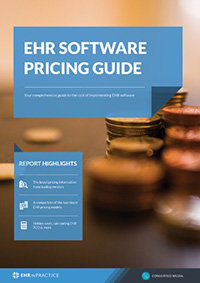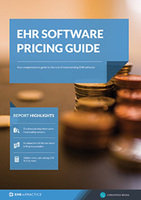Calculating the useful life of your EHR - is it possible?
An EHR’s useful life is an important consideration when calculating long-term ROI and contemplating the time frame in which an EHR should be replaced. However, useful life can be difficult concept to grasp and calculate given that it is often not clearly applied to EHRs. In the healthcare context useful life is often applied to medical equipment in the context of calculating depreciation for accounting purposes. In this context, useful life is a relatively tangible and easily grasped concept. However, in the context of EHRs, useful life is less clear.
Before discussing the useful life of an EHR, it is important to understand that the considerations used to arrive at a calculation differs, and when not applied properly can result in inaccurate outcomes, therefore it is important to ask the right questions with regard to useful life. One should not assume calculating an EHR’s useful life is impossible; however the accuracy of useful life calculations remains a question which is dependent on a number of factors which can be difficult to quantify and can vary based on context.
Defining the useful of an EHR
An EHR’s useful life refers to the utility the system provides to the owner. Restated, an EHR’s useful life can either refer to the amount of time that the EHR will be serviceable and supported by its vendor, or useful life may also speak to the predicted time a system will be in use before replacement or repair.
Calculating EHR useful life
Both accepted accounting methods and Federal guidelines in a number of healthcare related areas provide guidance as to the factors to be considered in determining useful life.
The factors used to determine useful life include normal wear and tear; obsolescence due to normal economic and technological changes; climatic and other local conditions; and the provider's policy for repairs and replacement. In the context of an EHR the of all the factors listed above, “obsolescence due to normal economic and technological changes” and “provider's policy for repairs and replacement” is most relevant.
Use this EHR pricing guide to start building a budget and calculating potential ROI for new software
The other factors generally apply to medical equipment and not software itself. Although a case can be made that the useful life of hardware accompanying the EHR could analyzed by examining wear and tear placed on the equipment and climatic and other local conditions. However, if one wants to calculate the useful life of EHR software one can arrive at an estimated useful life by simply determining when an EHR will be obsolete given the answers to the following questions.
There are obvious difficulties comparing an EHR to a piece of medical equipment that will show physical signs of wear and tear that will reduce its effectiveness and by association its useful life. Presumably software does not show physical wear and tear, it just becomes unusable, not due to overuse but due to the fact that it is obsolete and thus no longer functional or fit for purpose. In light of these considerations a practice can
Given a practice’s current and future EHR needs, how soon current software will be obsolete depends on:
- Changes in EHR regulation that deem an EHR no longer suitable. For example, if an EHR cannot support certain functionality required by Meaningful Use regulations its useful life should be calculated to correspond with the future date of noncompliance.
- Changes in practice needs that make an EHR no longer suitable to support how a practice operates internally or changes in workflows.
Factors that can impact useful life
When the software’s cost of operation starts exceeding the value it provides to a practice. Under this analysis, a practice would examine whether an EHR’s cost is no longer justifiable, therefore requiring replacement by a more cost effective product. Factors that can shorten useful life can include unsustainable maintenance costs due or lost productivity due to difficulty in how an EHR functions. In this case, the point at which an EHR could no longer be justified on these grounds would mark the end of its useful life.
In addition to an examination of obsolescence, an EHR’s useful life can also be gauged on when it will be replaced by the vendor. Calculating useful life under this method would be a combination of the obsolescence-related factors and the vendor’s replacement schedule. However if the vendor does not provide this information the obsolescence analysis would suffice.
Calculating useful life provides an opportunity for a practice to use more accurate long-term budgetary forecasting and to make a more informed decision when planning for a system’s replacement.
Free white paper

EHR Pricing Guide
Get your complete guide to EHR software pricing and project costs. Your headstart on EHR pricing research

Featured white papers
Related articles
-

How much EHR costs and how to set your budget
Build a realistic, workable budget for your EHR project with this guide
-

How to conduct an EHR cost benefit analysis in six steps
A step-by-step breakdown of an EHR cost benefit analysis, and what you can learn from it
-

10 hidden costs of EHR software
Find out more about some of the hidden EHR costs that can render your budget and ROI forecasts nu...



